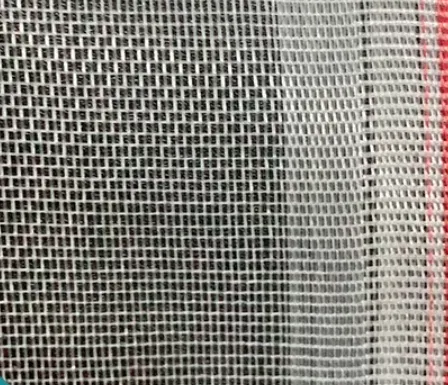-
 Afrikaans
Afrikaans -
 Albanian
Albanian -
 Amharic
Amharic -
 Arabic
Arabic -
 Armenian
Armenian -
 Azerbaijani
Azerbaijani -
 Basque
Basque -
 Belarusian
Belarusian -
 Bengali
Bengali -
 Bosnian
Bosnian -
 Bulgarian
Bulgarian -
 Catalan
Catalan -
 Cebuano
Cebuano -
 China
China -
 Corsican
Corsican -
 Croatian
Croatian -
 Czech
Czech -
 Danish
Danish -
 Dutch
Dutch -
 English
English -
 Esperanto
Esperanto -
 Estonian
Estonian -
 Finnish
Finnish -
 French
French -
 Frisian
Frisian -
 Galician
Galician -
 Georgian
Georgian -
 German
German -
 Greek
Greek -
 Gujarati
Gujarati -
 Haitian Creole
Haitian Creole -
 hausa
hausa -
 hawaiian
hawaiian -
 Hebrew
Hebrew -
 Hindi
Hindi -
 Miao
Miao -
 Hungarian
Hungarian -
 Icelandic
Icelandic -
 igbo
igbo -
 Indonesian
Indonesian -
 irish
irish -
 Italian
Italian -
 Japanese
Japanese -
 Javanese
Javanese -
 Kannada
Kannada -
 kazakh
kazakh -
 Khmer
Khmer -
 Rwandese
Rwandese -
 Korean
Korean -
 Kurdish
Kurdish -
 Kyrgyz
Kyrgyz -
 Lao
Lao -
 Latin
Latin -
 Latvian
Latvian -
 Lithuanian
Lithuanian -
 Luxembourgish
Luxembourgish -
 Macedonian
Macedonian -
 Malgashi
Malgashi -
 Malay
Malay -
 Malayalam
Malayalam -
 Maltese
Maltese -
 Maori
Maori -
 Marathi
Marathi -
 Mongolian
Mongolian -
 Myanmar
Myanmar -
 Nepali
Nepali -
 Norwegian
Norwegian -
 Norwegian
Norwegian -
 Occitan
Occitan -
 Pashto
Pashto -
 Persian
Persian -
 Polish
Polish -
 Portuguese
Portuguese -
 Punjabi
Punjabi -
 Romanian
Romanian -
 Russian
Russian -
 Samoan
Samoan -
 Scottish Gaelic
Scottish Gaelic -
 Serbian
Serbian -
 Sesotho
Sesotho -
 Shona
Shona -
 Sindhi
Sindhi -
 Sinhala
Sinhala -
 Slovak
Slovak -
 Slovenian
Slovenian -
 Somali
Somali -
 Spanish
Spanish -
 Sundanese
Sundanese -
 Swahili
Swahili -
 Swedish
Swedish -
 Tagalog
Tagalog -
 Tajik
Tajik -
 Tamil
Tamil -
 Tatar
Tatar -
 Telugu
Telugu -
 Thai
Thai -
 Turkish
Turkish -
 Turkmen
Turkmen -
 Ukrainian
Ukrainian -
 Urdu
Urdu -
 Uighur
Uighur -
 Uzbek
Uzbek -
 Vietnamese
Vietnamese -
 Welsh
Welsh -
 Bantu
Bantu -
 Yiddish
Yiddish -
 Yoruba
Yoruba -
 Zulu
Zulu
Optimizing Crop Protection with Effective Agricultural Insect Netting Solutions
Agricultural Insect Netting A Sustainable Solution for Modern Farming
As global agriculture faces increasing challenges from pests, climate change, and the need for sustainable practices, innovative solutions are emerging to support farmers. One such solution is agricultural insect netting, a protective barrier that has gained popularity in recent years. This article explores the benefits, applications, and significance of insect netting in modern farming.
What is Agricultural Insect Netting?
Agricultural insect netting is a lightweight and durable mesh material designed to protect crops from harmful insects while allowing sunlight, air, and water to reach the plants. Typically made from high-density polyethylene or polypropylene, this netting comes in various mesh sizes to target specific pests while minimizing the risk of disrupting beneficial insects.
Benefits of Insect Netting
1. Pest Control The primary advantage of insect netting is its effectiveness in repelling pests. By creating a physical barrier, it prevents insects such as aphids, whiteflies, and beetles from reaching the crops. This method reduces the reliance on chemical pesticides, promoting a more sustainable approach to farming.
2. Protection from Environmental Factors In addition to pest control, insect netting shields crops from harsh weather conditions, including heavy rain, hail, and strong winds. This protection helps maintain the health of the plants and can lead to higher yields.
3. Pollinator Conservation While insect netting keeps harmful pests out, it can be designed to allow beneficial pollinators, like bees and butterflies, to enter. This balance supports both pollination and pest management, fostering a healthier ecosystem on the farm.
agricultural insect netting

4. Reduction of Crop Damage Since the netting acts as a barrier, it significantly decreases the risk of damage to crops, leading to improved overall plant health and productivity. Farmers can ensure that their crops reach maturity without suffering from infestations or environmental stresses.
5. Cost-Effectiveness Although the initial investment in insect netting may seem high, the long-term savings from reduced pesticide use and increased crop yields often outweigh the costs. Additionally, farmers can save on labor and resources associated with pest management.
Applications in Farming
Agricultural insect netting can be utilized in various farming practices. It is commonly used in vegetable, fruit, and flower cultivation, as well as in organic farming systems where chemical intervention is minimized. Greenhouses and orchards often benefit from insect netting to create controlled environments that support healthy growth.
The versatility of insect netting also extends to small-scale and community gardens. Urban agriculture initiatives are increasingly incorporating netting to protect crops in densely populated areas where pest populations may be more prevalent.
Conclusion
Insect netting represents a significant advancement in agricultural technology and sustainability. By providing an effective, eco-friendly method of pest control, it supports the goal of reducing chemical inputs in farming while enhancing crop productivity. As the agriculture industry continues to embrace innovative practices, agricultural insect netting stands out as a practical solution that aligns with the growing demand for sustainable food production. Embracing such technologies can lead to healthier crops, a more robust ecosystem, and ultimately, a more sustainable future for our food systems.
-
The Sunshade Net Can Block Ultraviolet RaysNewsAug.11,2025
-
Main Application and Technology of Nylon ScreenNewsAug.11,2025
-
Green Anti UV Sunshade Net: The Perfect Combination of Ecological Friendliness and Practical PerformanceNewsAug.11,2025
-
Explore the Sunshade NetNewsAug.11,2025
-
Application and Development of Nylon Screen in Fuel Processing and TreatmentNewsAug.11,2025
-
Application and Advantages of Nylon Screen for AquacultureNewsAug.11,2025











